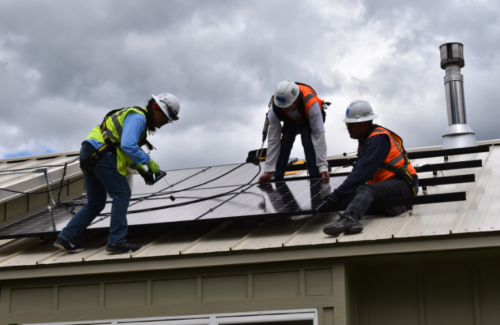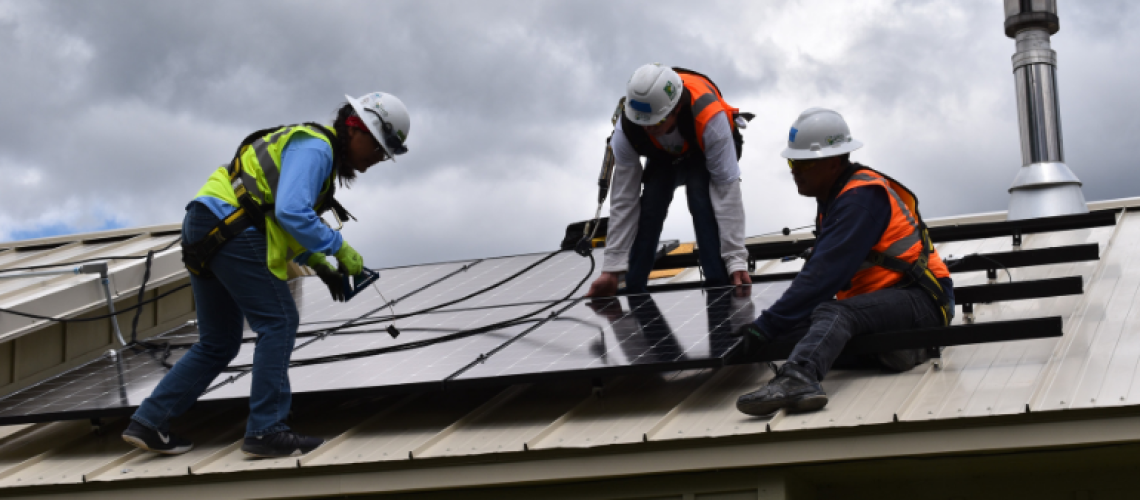The Dept. of the Treasury has issued guidance on the Inflation Reduction Act (IRA)’s ITC adders for projects located in low-income or tribal communities, as well as energy communities — areas with brownfield sites or shuttered coal plants.

A GRID Alternatives installation for the Spokane Indian Reservation
Under the “Low-Income Communities Bonus Credit program” under Sec. 48(e) of the Internal Revenue Code, up to a 10% adder to the ITC is available for siting projects in energy communities; up to 10% for projects smaller than 5 MWAC that are located in low-income communities or tribal lands; and up to 20% for projects smaller than 5 MWAC that qualify as residential building projects or economic benefit systems.
The bonus credit program will allocate 1.8 GW of capacity in 2023 across four categories for solar and wind projects not larger than 5 MWAC:
- 700 MW allocated for facilities in low-income communities
- 200 MW for facilities located on Tribal land
- 200 MW for facilities serving federally-subsidized residential buildings, including housing supported by the Low-Income Housing Tax Credit and Section 8 of the Housing Act
- 700 MW for facilities where at least 50% of the financial benefits of the electricity produced go to households with incomes below 200% of the poverty line or below 80% of area median gross income
The application process for the Low-Income Communities Bonus Credit program will open in 2023 in two phases. Applications for facilities that are part of low-income residential buildings and those that benefit low-income households will be accepted first, with applications for other projects to follow. The guidance maintains Treasury and IRS discretion to reallocate excess capacity to oversubscribed categories, and any unallocated 2023 capacity will rollover to the following calendar year. Future guidance will provide additional information about the application process and eligibility.
“Thanks to President Biden’s leadership, the Inflation Reduction Act ensures all Americans benefit from the growth of the clean energy economy by driving investment in communities that have often been overlooked and left behind. These investments will create good-paying jobs in vital fields like clean energy manufacturing, critical minerals processing, and solar installation,” said Treasury Deputy Secretary Wally Adeyemo. “These investments will also allow for existing energy infrastructure to be retooled for the clean energy economy and lower energy costs for families who have struggled to pay their utility bills. The guidance released today gets these programs off the ground, as we continue to work toward allocating incentives to these critical projects.”
Additional reporting by Kelly Pickerel



